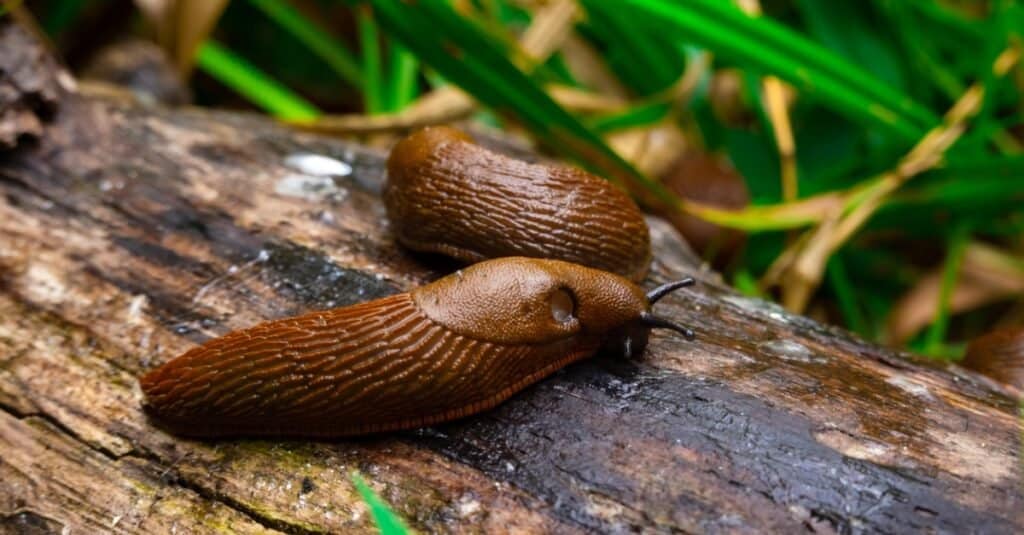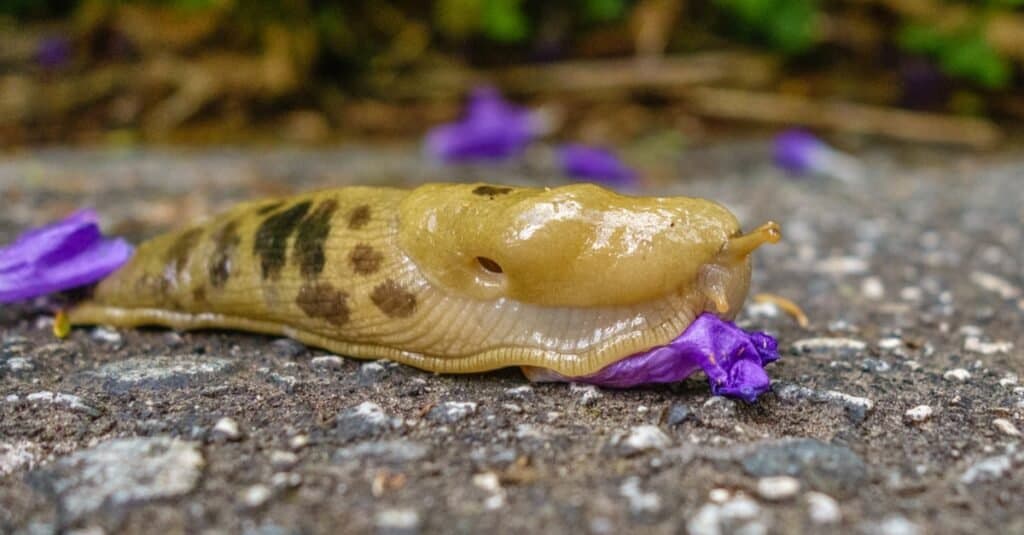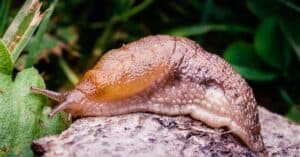What do you get when you cross a slug with a Volkswagen… a slug-bug! All joking aside, slugs are a rather peculiar animal, characterized by having soft fleshy bodies and leaving slime trails in their paths. Being such a common animal that can be found even in your garden, slugs often confuse people in terms of describing what type of creature they are.
Due to their pest-like nature, many people group slugs in with insects and bugs. As shown with the joke above, there are even colloquial expressions that join the two together! Today, we will take a look at what slugs are, what animal groups they fall into, and of course, if they are bugs!
What Are Slugs?
Although it may seem rather simple, we should cover what slugs are. In basic, slugs are small animals that are tubular and typically grow between 3-7 inches in length. They are diverse in terms of tier coloration, ranging from drab browns to bright yellows. Slugs have characteristic eye stalks that protrude from their front end. When they are scared or sense danger, they can retract these stalks to protect their eyes!
The bottom of a slug is called a “foot”. It is used for many functions, such as movement and feeding, which makes it very important for survival.
Slugs are essentially walking decomposers. They eat a variety of food, such as leaf litter, waste, carrion, and even mushrooms. If you have ever grown plants in a garden, you’ve probably experienced the horror of watching your baby plants be eaten overnight by a gang of slugs!
Don’t blame these issues on all slugs, though. Almost all major crop damage and ecosystem imbalances due to slugs are caused by invasive species. In contrast, most native species are solitary and add to the environment, instead of taking away from it.
Are Slugs Insects, Bugs, or Something Else?

Slugs can otherwise be described as “snails without shells”.
©iStock.com/Ja’Crispy
To answer the main question of the day, slugs are not insects. Insects are rather confusing to classify, but they have a few main characteristics. For example, insects have 3 main body sections: the head, the thorax (middle section), and the abdomen. Additionally, they also have traits that are found in the greater arthropods, such as:
- A segmented body
- Paired segmented appendages
- Bilateral symmetry
- An external skeleton that molts away as it grows.
As you can tell, these traits don’t apply to slugs, which aren’t segmented, don’t have distinct body sections, and don’t have an external skeleton.
In addition to this, they aren’t considered to be bugs. Simply put, bugs are a further division of the insects that have further specializations, such as tube-like mouthparts.
With those categories ruled out, it is clear that they are something other than insects or bugs. Slugs are very different from these groups and are known to be in the mollusk groups. Mollusks constitute a variety of animals such as snails, slugs, mussels, and even clams! They have extremely unique traits, such as a singular foot, bilateral symmetry, and dorsal visceral mass.
How Many Slugs Are There?
With their abundance, there are a staggering amount of slugs around the world. Unfortunately, the process of determining individual species can be extremely tedious, as many look extremely alike. A lot of species distinctions require complete dissection during adult ages. With that said, it is recorded that as a whole, there are around 40,000 species of gastropods in the world!
With that in mind, not all gastropods are created equal. The term “gastropod” generally refers to the greater group of slugs and snails, which can include a variety of animals, ranging from typical garden slugs to alien-like nudibranchs!
Slug Reproduction

As a survival mechanism, being hermaphroditic allows both slugs to produce eggs after mating. This essentially double the reproductive output of the species!
©Heidi Besen/Shutterstock.com
As mentioned earlier, slugs can be a nuisance if you are a gardener. During the growing season, it can seem like there are an infinite amount of them constantly vying for your luscious plants. One explanation for their incredible abundance is due to their reproductive habits, which enable them to make lots of offspring.
Slugs are hermaphroditic animals, meaning they carry both eggs and sperm. This allows them to reproduce with any other individual they come across. Likewise, it means both slugs that participate in a mating event can create babies!
They can have some pretty elaborate mating rituals, filled with pheromones and attraction. After two find each other, they will intertwine, sometimes even dangling from a tree branch depending on the species. During this time, both individuals deposit sperm into the other. After they are done, the slugs will separate and lay fertilized eggs. Most can lay batches of up to 40 eggs at a time, culminating to an average of around 500 eggs in a lifetime!
The photo featured at the top of this post is © Meyta/Shutterstock.com
Thank you for reading! Have some feedback for us? Contact the AZ Animals editorial team.





